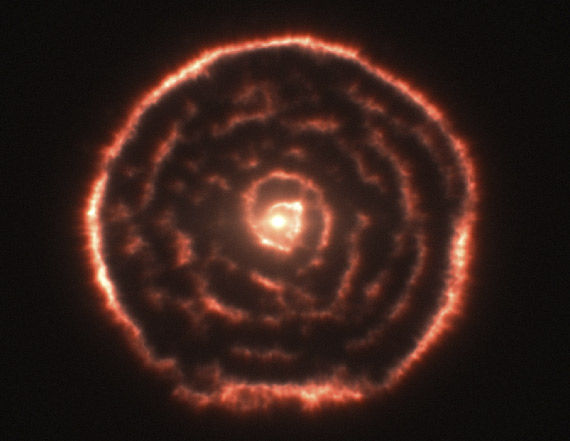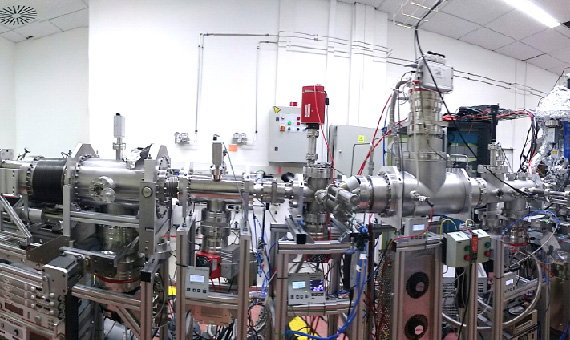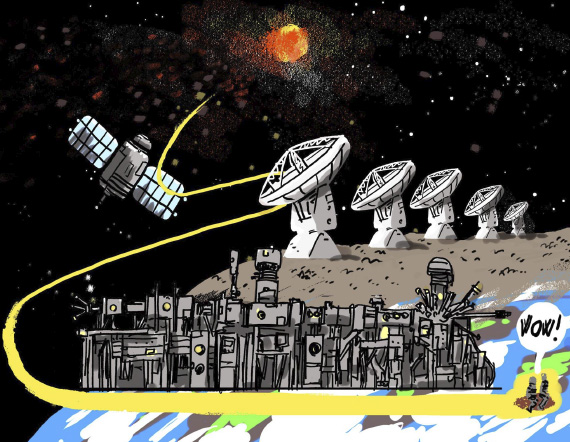This maxim has been resoundingly fulfilled throughout the history of mankind. Thus, humans crossed the oceans to go around the Earth, climbed the highest mountains, and walked on the surface of the Moon. To do this, they needed the right mix of science and technology to provide them with the material means to make a journey that would often be without return. You don’t have to go back to distant times to understand this claim. Today the list of volunteers to go to Mars with just a one way ticket is very long. Humanity’s ability to make these journeys undoubtedly goes hand in hand with scientific-technological advances, for to reach these geographical limits humans have needed inventions to be artificially endowed with those attributes that nature hasn’t given them.
However, those extreme places are not always attainable. A trip to the center of the Earth is impossible for our species because the temperatures and pressures there are such that no living being or machine would last in a solid state. There are places where you can only “get there” with robots, theoretical calculations, laboratory simulations or your imagination. The first three means are part of scientific knowledge, while the latter is the mastery of science fiction, where the laws governing the universe are modified so that, in that fantastic world, you can travel to where no man has gone before. Humanity has to accept its limitations and settle for observing these places from afar without being able to delve deep into them. Not conforming to its destiny, society has invented advanced microscopes that allow us to scrutinize the inside of the matter or powerful telescopes that can teach us as it is the last frontier of space.
The Dying Stars
One of those impossible environments is dying stars and the area around them. Many stars, as will happen to our sun, having consumed almost all of their fuel, increase in size and cool, becoming what we know as a red giant. This is the end of their life cycle and at that point they send the atoms they have produced into space. As they travel from the star’s surface to the interstellar medium, these atoms will be grouped together to form molecules and particles the size of a few nanometers. This star debris or residue is what is known as cosmic dust, a combination of small particles along with gases that will evolve through their interaction with radiation and growing due to collisions with other fragments and molecules. Cosmic dust will increase in size to planetary systems and, within them, planets like Earth. So we can say that everything and all of us come from cosmic dust.

It is often said that the Earth’s atmosphere is a size that holds the same proportion as orange peel with an orange. However, a giant red star has an atmosphere associated with it that extends up to 50 times its radius. The atoms emitted from the star, when they reach an area between 2 and 4 times its radius, feel that the temperature has decreased enough for the chemistry to act and can be grouped together forming the first molecules. This area is like a dense and warm cloud, which we are unable to observe due to the high amount of nanoparticles, atoms and molecules formed.
Astrochemistry, a branch of astronomy devoted to studying chemical reactions in the cosmos, has managed to identify by using powerful radio telescopes, such as ALMA, or space telescopes that capture infra-red images, such as Herschel, more than 150 molecules that have formed in space. ALMA is a network of radio telescopes located in the Atacama desert (Chile), which began operating at full power in 2015 and has since been providing astronomers with images of stars with unprecedented lateral and spectral resolution. Thanks to these images, astronomers can claim that in regions close to the stars there is much more chemical diversity than was thought.
The “journey” to its atmosphere
In 2013, three researchers accepted the challenge of making a trip into the atmosphere of dying stars using a laboratory machine that reproduces, as far as possible, the physical conditions of these inhospitable places and that allows us to form materials with a composition that is similar to cosmic dust. We call this machine, as it couldn’t be any other way, Stardust, and for its design and assembly we use ultra-high vacuum (UHV) technology. The research groups of José Cernicharo (radio-astronomy expert), Christine Joblin (laboratory astrophysics expert) and José Angel Martín Gago (expert in surface science and UHV technology) met to request from the European Research Council one of the so-called “synergy contracts” that would allow us, among other things, to build this machine. The project, called NANOCOSMOS, was funded and for the last five years we have been working on its design and assembly, materializing an idea that started on a paper napkin during the first meeting in a cafeteria, which evolved with the first technical designs and eventually became reality (see image).

A month ago we published the first scientific article related to the results obtained in Stardust (Nature Astronomy, 2019). In it we study the chemistry of carbon and hydrogen, the main constituents of the photosphere of many evolved stars and conclude that these, in the gas phase and in those concentrations, result in the formation of nanometric carbon particles and carbon chains similar to those found in oil. Our work, against what is thought, proves that aromatic molecules, essential for life and ubiquitous on Earth, do not form in these areas of the cosmos.
The ERC selected a number of projects to make a comic based on scientific ideas funded by the institution. NANOCOSMOS was one of the projects selected and the resulting comic, by Lorenzo Palloni, is entitled STAR and is a sci-fi story that can be read online.

Thus, to reach these distant and impossible places, humanity uses its intellectual capacity to build simulation equipment that, like spaceships, unveil the secrets of “space: the final frontier”.
Comments on this publication